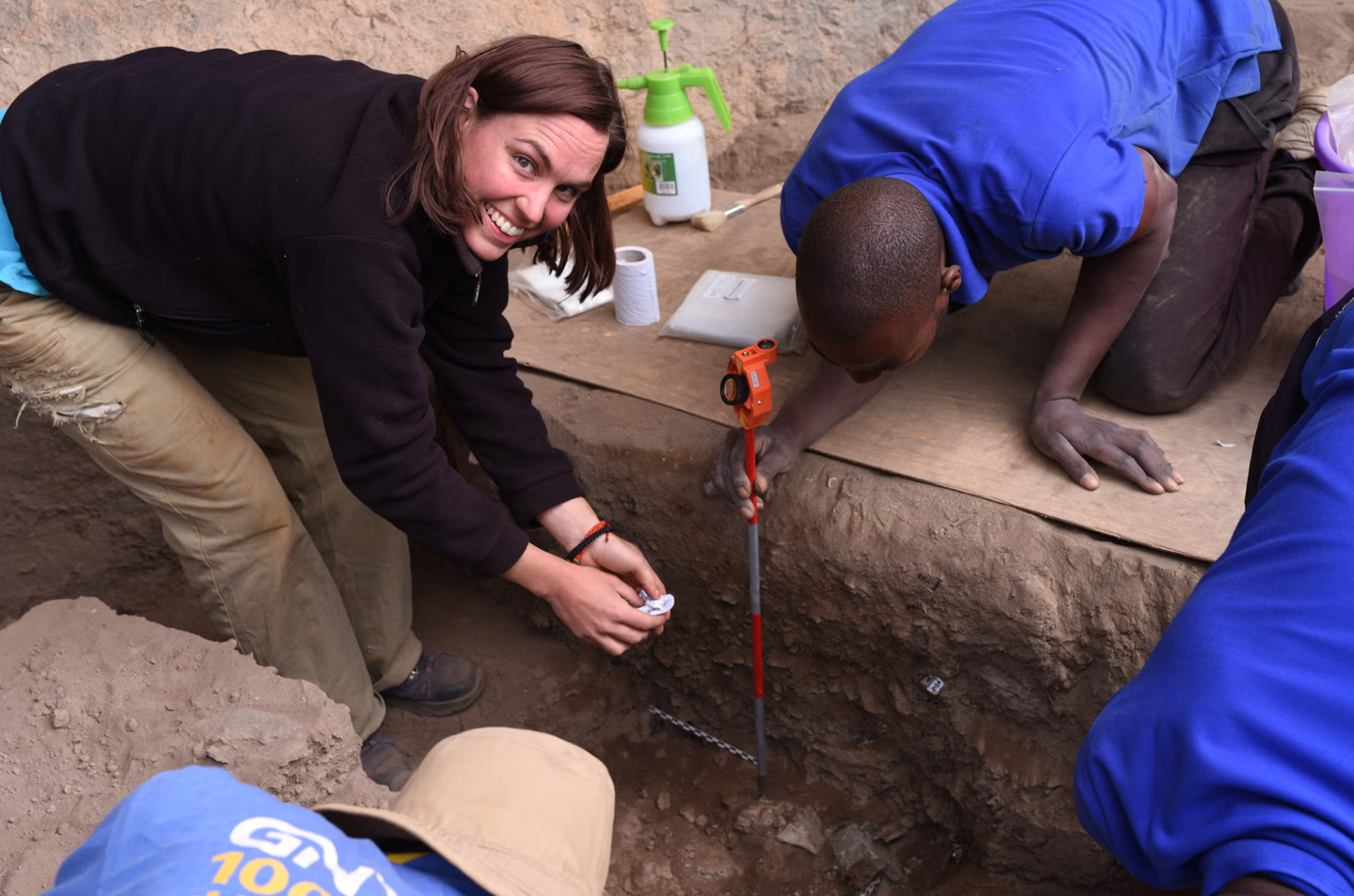Breakthrough study uses common drug to significantly improve osteoarthritis symptoms
New research has unearthed the potential of an existing, budget-friendly medication in providing much-needed relief for osteoarthritis

[Oct. 18, 2023: Staff Writer, The Brighter Side of News]
A groundbreaking development promises to alter the therapeutic landscape for individuals grappling with hand osteoarthritis (OA). (CREDIT: Creative Commons)
In a groundbreaking development that promises to alter the therapeutic landscape for individuals grappling with hand osteoarthritis (OA), a recent study conducted by Monash University in collaboration with Alfred Health has unearthed the potential of an existing, budget-friendly medication in providing much-needed relief.
This comes as a beacon of hope, particularly when effective treatment options for this prevalent condition have been notoriously scarce.
The study, meticulously detailed in a paper published in the prestigious medical journal The Lancet, centers on methotrexate, a medication with a proven track record in effectively managing inflammatory joint conditions, including rheumatoid arthritis and psoriatic arthritis. Despite being a staple in the Australian medical community and widely used globally since the early 1980s, its efficacy in treating hand OA has only recently been explored.
Researchers have discovered that a regimen of methotrexate, administered in a 20mg oral dose weekly over a span of six months, wielded a moderate yet significant effect in alleviating pain and stiffness among patients tormented by symptomatic hand OA. This revelation is not just scientifically intriguing—it opens up a new horizon in managing a condition that significantly undermines the quality of life for many.
Related News
Hand OA stands as a formidable adversary to an active lifestyle, inflicting pain and functional impairment that hinder basic daily activities—from dressing to eating. The statistics paint a sobering picture, with one in two women and one in four men likely to develop symptomatic hand OA by the age of 85.
In this demographic, approximately half will endure inflamed joints—a condition synonymous with not only excruciating pain but also notable joint damage. In spite of its widespread incidence and the substantial burden it places on individuals, the medical community's arsenal has, until now, frustratingly lacked effective pharmaceutical interventions.
The senior author of the study, Professor Flavia Cicuttini, who leads Monash University’s Musculoskeletal Unit and presides as The Alfred’s Head of Rheumatology, elaborated on the findings. She emphasized how the study shed light on the pivotal role of inflammation in hand OA and underscored the potential benefits of strategizing treatments to target patients afflicted by painful, inflamed hand joints.
The study shed light on the pivotal role of inflammation in hand OA and underscored the potential benefits of strategizing treatments to target patients afflicted by painful, inflamed hand joints. (CREDIT: Aamulya via iStock)
“In our study, as with most studies of osteoarthritis, both the placebo group and methotrexate groups’ pain improved in the first month or so,” Professor Cicuttini explained, providing insight into the drug's performance during trials.
“However, pain levels stayed the same in the placebo group but continued to decrease in the methotrexate group at three and six months, when they were still decreasing. The pain improvement in the methotrexate group was twice as much as in the placebo group," she added, highlighting the distinctive, sustained pain relief experienced by participants receiving methotrexate compared to those on a placebo.
Researchers found that methotrexate reduced symptoms in those with hand osteoarthritis (OA). (CREDIT: Creative Commons)
Armed with these promising results, Professor Cicuttini advocates for the integration of methotrexate into the management protocols for hand osteoarthritis exhibiting an inflammatory pattern. “This provides clinicians with a treatment option for this group, which tends to get more joint damage,” she stated, acknowledging the profound implications of the findings for a demographic previously underserved in terms of effective treatment options.
Elucidating the timeline of the drug's impact, Professor Cicuttini noted, “In patients with hand OA and inflammation, the effects of methotrexate were present at about three months and by six months it was very clear if it worked.” This timeframe offers a practical window for healthcare professionals and patients to evaluate the drug's effectiveness and make informed decisions on whether to proceed with the therapy. “This is very similar to what we currently do with other forms of inflammatory arthritis,” she affirmed, contextualizing the treatment within existing practices.
Professor Flavia Cicuttini, who leads Monash University’s Musculoskeletal Unit and presides as The Alfred’s Head of Rheumatology. (CREDIT: Monash University)
The study, a paradigm of rigorous research design, was an NHMRC-funded, randomised, double-blind, placebo-controlled trial involving 97 participants. It aimed to discern whether a weekly 20 mg dose of methotrexate could outperform a placebo in diminishing pain and enhancing function over six months in individuals with symptomatic hand OA coupled with synovitis, an inflammatory condition. The participant pool was drawn from a diverse geographical cross-section, including individuals from Melbourne, Hobart, Adelaide, and Perth.
Further accentuating the potential impact of the study, Professor Cicuttini pointed out the results' implications for a specific demographic: “The results could provide relief for people with hand OA inflammation, which was particularly common in women as they experienced menopause.”
However, she acknowledged that the journey doesn't end here. “Further trials are needed to establish whether the effect of methotrexate extends beyond six months, for how long we need to treat patients, and whether methotrexate reduces joint damage in patients with hand osteoarthritis and associated inflammation,” Professor Cicuttini cautioned, indicating the avenues still to be explored.
In alignment with this forward-looking mindset, Professor Cicuttini disclosed plans for an ensuing trial intended to build on the current findings. This follow-up research will specifically investigate whether a subset of women—who tend to develop hand OA around menopause, often manifesting as severe pain and joint damage—might particularly benefit from methotrexate therapy.
This study stands as a testament to the power of innovative medical research, reinvigorating the hope for millions affected by hand osteoarthritis. Through the repurposing of methotrexate, a drug with a long history in treating other forms of arthritis, researchers have illuminated a path forward in the quest to enhance the quality of life for those living with this debilitating condition.
As science continues to unravel the mysteries of osteoarthritis, this pioneering work by Monash University and Alfred Health marks a significant stride towards a future where pain is no longer an insurmountable barrier to living life to the fullest.
Symptoms of Osteoarthritis
According to the Mayo Clinic, osteoarthritis symptoms often develop slowly and worsen over time. Signs and symptoms of osteoarthritis include:
Pain. Affected joints might hurt during or after movement.
Stiffness. Joint stiffness might be most noticeable upon awakening or after being inactive.
Tenderness. Your joint might feel tender when you apply light pressure to or near it.
Loss of flexibility. You might not be able to move your joint through its full range of motion.
Grating sensation. You might feel a grating sensation when you use the joint, and you might hear popping or crackling.
Bone spurs. These extra bits of bone, which feel like hard lumps, can form around the affected joint.
Swelling. This might be caused by soft tissue inflammation around the joint.
Risk factors that can increase your risk of osteoarthritis include:
Older age. The risk of osteoarthritis increases with age.
Sex. Women are more likely to develop osteoarthritis, though it isn't clear why.
Obesity. Carrying extra body weight contributes to osteoarthritis in several ways, and the more you weigh, the greater your risk. Increased weight adds stress to weight-bearing joints, such as your hips and knees. Also, fat tissue produces proteins that can cause harmful inflammation in and around your joints.
Joint injuries. Injuries, such as those that occur when playing sports or from an accident, can increase the risk of osteoarthritis. Even injuries that occurred many years ago and seemingly healed can increase your risk of osteoarthritis.
Repeated stress on the joint. If your job or a sport you play places repetitive stress on a joint, that joint might eventually develop osteoarthritis.
Genetics. Some people inherit a tendency to develop osteoarthritis.
Bone deformities. Some people are born with malformed joints or defective cartilage.
Certain metabolic diseases. These include diabetes and a condition in which your body has too much iron (hemochromatosis).
For more science and technology stories check out our New Discoveries section at The Brighter Side of News.
Note: Materials provided above by The Brighter Side of News. Content may be edited for style and length.
Like these kind of feel good stories? Get the Brighter Side of News' newsletter.



